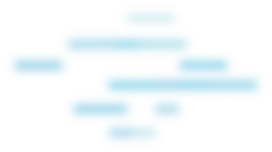Picture this: your company's IT environment generates massive amounts of digital footprints daily, from login attempts to application errors. Hidden in all this data could be clues about potential security breaches, compliance risks, or even system inefficiencies. That’s where log analysis comes in.
This isn’t just another IT buzzword. Log analysis plays a critical role in cybersecurity, incident response, and performance optimization. Whether you’re trying to detect ransomware behavior, monitor privilege escalation, or meet compliance regulations, log analysis equips you with the insights to act swiftly.
Curious about how it works, why it’s important, and how it can revolutionize your organization's approach to security and system management? Dive in below, and we’ll break it all down.
Why Is Log Analysis Important?
Logs are more than just technical "diaries" of your systems. They’re goldmines of insights! Here’s why enterprises prioritize log analysis:
1. Real-Time Threat Detection
Cyberattacks don’t wait. Whether it’s identifying multiple failed logins (think brute force attacks) or spotting unauthorized access, real-time alerting through log analysis ensures you can act fast before minor issues escalate.
2. Root Cause Analysis
Trying to figure out why your application crashed last night? Logs hold the clues. They allow you to reconstruct timelines and uncover hidden causes so you're not just patching symptoms but solving the actual issue.
3. Compliance and Audits
Industries like healthcare (HIPAA) and, finance (PCI DSS), or laws like general data privacy regulation (GDPR) impose strict regulations on managing and monitoring logs. Proper log analysis helps you document compliance and sail through audits with ease.
4. Optimize Performance
Think analyzing logs is just about security? Think again. Logs can point out performance hiccups like high latency or server overloads, helping fine-tune your systems for maximum efficiency.
How Log Analysis Works in Cybersecurity
At its core, log analysis follows a systematic approach. Here’s what the process looks like:
Step 1: Collection
Tools like SIEM systems and XDR platforms gather data from diverse sources such as servers, firewalls, operating systems, and applications. This is where the magic begins.
Step 2: Normalization
Logs come from everywhere and in different formats. Normalization ensures all logs are converted into a consistent structure, making them easier to sort and analyze.
Step 3: Correlation
Think of this step as connecting the dots. Logs from different devices and systems are analyzed together to identify patterns or suspicious activities—for example, repeated login attempts across multiple servers.
Step 4: Visualization
Data is only useful if you can act on it. Dashboards and graphs turn raw log data into digestible, actionable insights that even non-technical stakeholders can understand.
Step 5: Alerts and Reporting
Automated alerts trigger when anomalies are detected—like a sudden spike in login attempts from overseas. Additionally, robust reporting ensures long-term trends are identified, compliance is documented, and strategic decisions are data-driven.
Common Use Cases for Log Analysis
From detecting criminals in your network to optimizing workflows, log analysis has diverse applications. Here are a few ways it’s making an impact:
1. Detecting Ransomware Behavior
For obvious reasons, ransomware scares everyone these days. Log analysis tools scan for behaviors like mass file encryption or unusual outbound communication, catching ransomware early before major damage occurs.
2. Identifying Lateral Movement
Once an attacker gains entry, they often explore your network for sensitive targets. Log analysis identifies this "lateral movement," flagging suspicious activities that indicate deeper compromises.
3. Monitoring Privilege Escalation
Did a user suddenly gain admin access without justification? Logs can instantly identify such privilege escalations that might spell an insider threat or breached account.
Manual vs Automated Log Analysis
While logs can be manually analyzed, the sheer volume of modern data has made automation through tools like SIEM (Security Information and Event Management) a necessity. Here’s why automation is often the better choice:
Benefits of Automated Log Analysis
Speed: Analyze millions of events in seconds.
Accuracy: Reduces human error by consistently identifying key patterns or anomalies.
Efficiency: Frees up your IT and security teams to focus on more complex tasks.
When Manual Analysis Is Still Necessary
Not every anomaly screams “breach!” Manual triage, often driven by human instinct and expertise, is still critical for inspecting nuanced or unprecedented threats flagged by automated systems.
Best Practices for Effective Log Analysis
Want to ensure your log analysis efforts are successful? Follow these pro tips:
1. Collect Logs from All Critical Systems
Cover your bases by gathering information from:
Network devices (routers, firewalls)
Applications
Operating systems
Cloud services
Don't leave gaps that attackers could exploit.
2. Set Baselines and Tune Alert Thresholds
Not every failed login is an emergency. Set baselines for normal activity and adjust alert thresholds to prevent fatigue from false positives.
3. Integrate Threat Intelligence Feeds
Use up-to-date threat intelligence to identify malicious actors and suspicious IPs in your logs. Threat feeds can also help correlate activity patterns to known threats.
4. Automate Reports and Dashboards
Save time and enhance clarity by using tools that produce customizable dashboards, offering a real-time overview of what’s happening across your systems.
5. Review Logs Regularly
Don’t wait for incidents! Proactive, regular log reviews can catch minor issues or early warning signs before they escalate.
FAQs About Log Analysis in Cybersecurity
Log analysis refers to the process of reviewing and interpreting system, network, or application logs to identify patterns, detect threats, and gain actionable insights. It plays a key role in security incident detection, troubleshooting, and compliance monitoring.
Logs contain valuable data about network activity, user behavior, and system events. By analyzing logs, cybersecurity teams can spot anomalies, such as unauthorized access attempts or unusual traffic, which could indicate a potential threat.
Compliance standards like GDPR, HIPAA, and PCI-DSS often require organizations to monitor and document their security practices. Log analysis ensures you’re gathering evidence of security-related activities and meeting those documentation requirements.
While log analysis alone won’t stop an attack, it helps identify vulnerabilities, detect malicious activities early, and respond quickly. When paired with other security measures, it becomes a proactive defense tool.
Popular tools include Splunk, Elastic Stack (ELK), Graylog, and SolarWinds. These platforms allow you to collect, filter, and analyze log data effectively.
The frequency of log reviews depends on your organization’s size and security posture, but regular analysis is critical. High-risk industries like healthcare or finance may benefit from daily or even near real-time monitoring.
Absolutely! Small businesses are often targeted by cybercriminals. Log analysis tools can be scaled to fit your needs and help secure your data, even on a smaller budget.


Take the Proactive Approach
Log analysis is no longer just a "nice-to-have" in cybersecurity; it’s a foundational tool for protecting your operations, optimizing performance, and ensuring compliance. Whether you’re guarding against sophisticated cyber threats or simplifying audits, the right log analysis strategy gives you an undeniable edge.
Looking to elevate your log analysis game? Leave the grunt work to us with our Managed EDR and Managed SIEM products and reserve your team’s time for other investigations that require in-depth expertise.
Want to learn more about how log analysis fits into modern cybersecurity practices? Try one of today’s top security solutions for free—and start uncovering the stories your logs have to tell!


Solving the SIEM Problem
Whether you’re grappling with excessive false positives, struggling to find the right expertise, or facing unpredictable costs, you’ll get the insights you need to make informed decisions about your security strategy.








